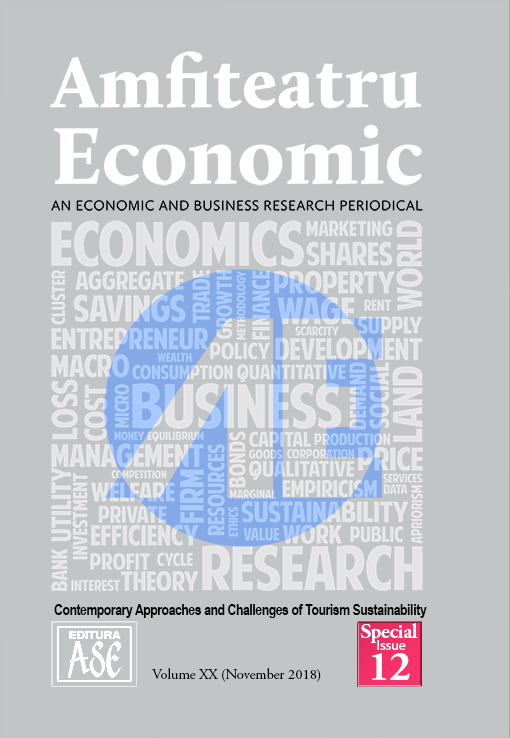DETERMINANTS AND IMPLICATIONS OF THE TOURISM MULTIPLIER EFFECT IN EU ECONOMIES. TOWARDS A CORE-PERIPHERY PATTERN?
DETERMINANTS AND IMPLICATIONS OF THE TOURISM MULTIPLIER EFFECT IN EU ECONOMIES. TOWARDS A CORE-PERIPHERY PATTERN?
Author(s): Gabriela Carmen Pascariu, Bogdan-Constantin IBĂNESCUSubject(s): Economy
Published by: EDITURA ASE
Keywords: tourism; European Union; tourism multiplier effect; stepwise regression; tourism competiveness; centre-periphery pattern
Summary/Abstract: Tourism is considered an opportunity for ensuring sustainable growth and reducing economic gaps for many less developed countries and regions. Being one of the most dynamics industries, tourism proves to be strongly resilient, with a high level of involvement and multiplication for receiver economies. The multiplication potential is, however, dependent upon a series of factors (endogenous and exogenous), insufficiently analysed in the literature, and the impact on growth and convergence is controversial. This paper aims to bring additional insights from this perspective, the main purpose of the research being to identify the macroeconomic determinants responsible for the higher values of the tourism multiplier effect and to highlight the potential of this industry to reduce the disparities between the economies of the European Union EU. Using the Stepwise regression and a series of indicators that associate the economic, social and spatial dimensions of European tourism, the main determinants of multiplier effects (on GDP and job creation) are identified and, then, the processes of multiplication from the perspective of centre-periphery dynamics are analysed. The research results indicated that tourism development in the Union reflects a centre-periphery model and has a high potential for contributing to reducing intra-EU disparities.
Journal: Amfiteatru Economic
- Issue Year: 20/2018
- Issue No: SI 12
- Page Range: 982-997
- Page Count: 16
- Language: English

